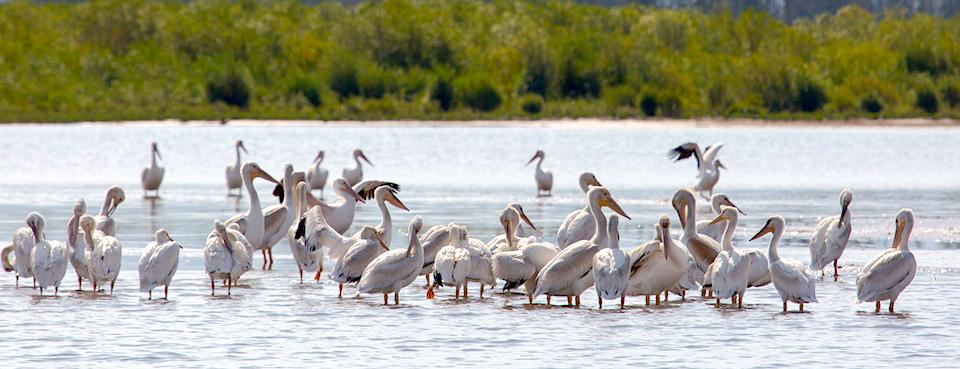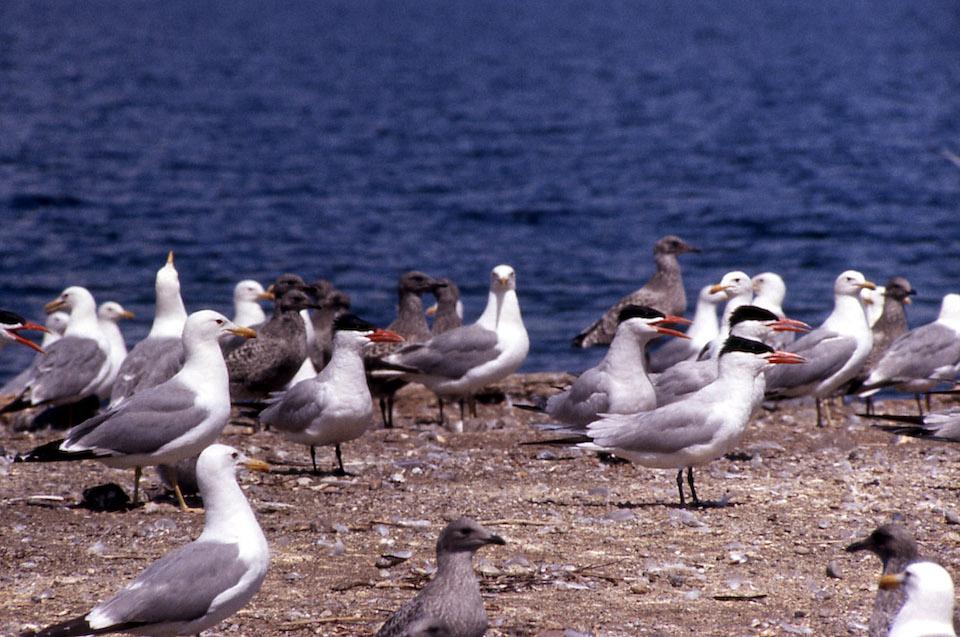
White pelicans in Southeast Arm of Yellowstone Lake, Yellowstone National Park/NPS, Neal Herbert
White pelicans, Caspian terns, Double-crested cormorants and other bird species on Yellowstone Lake are being impacted due to the lake trout infestation there.
"There’s white pelicans, there’s Double-crested comorants, Caspian terns, and there were gulls as well, but they don’t nest any more on the islands," Todd Koel, Yellowstone National Park's fisheries biologist, said of the Molly Islands deep in the lake's Southeast Arm. "All those colonial waterbirds were dependent upon cutthroat trout, all most likely have been impacted."
The lake trout that were first noticed in Yellowstone Lake in 1994 have greatly impacted the lake ecosystem, though Koel said efforts to beat down the big fish's population seem to be working.
White pelicans, which long have nested at the islands, haven't been as impacted by the loss of cutthroat trout because these big birds can travel elsewhere for their meals, the biologist said during a recent interview.
"To what degree they’re doing that because of the cutthroat decline, we’re not tagging and tracking pelicans, but they do have that ability. They’re pretty mobile,” said Koel, adding that white pelicans can go to the headwaters of the Snake River or downstream to the Yellowstone River for meals and return to Yellowstone Lake.

Caspian terns and California gulls in Yellowstone National Park/NPS, Bryan Harry
How greatly the decline in cutthroat trout has impacted the other bird species is tough to assess, he said, in part because flooding sometimes impacts the Molly Islands where they have been known to nest.
"We know that the colonial water birds have declined on the lake, but our ability to tease out the effect of the cutthroat loss vs. the environmental lake level conditions and all that, we haven’t been able to nail that down," said the biologist.
Caspian terns have been opportunistic, though, as they'll follow the Park Service boats that head onto Yellowstone Lake to net the lake trout. Once the crews remove the trout from the nets, pop their air bladders so they'll sink, and toss them back into the lake the terns swoosh down for a meal, Koel noted.



Comments
I had to read this three times to get the point of why the pelicans were being "impacted." (It's not an acceptable verb.) The LOSS of the trout should have been in paragraph ONE!!@1